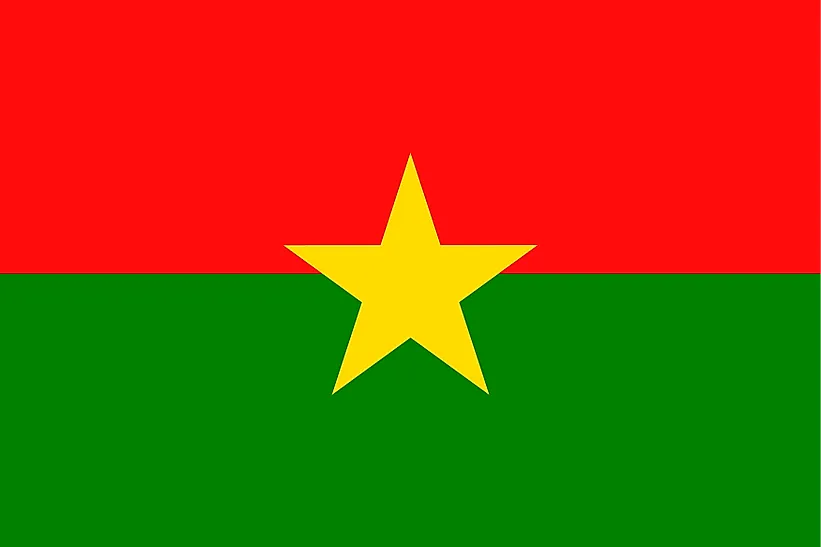
ブルキナファソ
| 大陸 | アフリカ |
| 資本金 | ワガドゥグー |
| 人口 | 19,512,533 |
| GDP | $32.99 億ドル |
| 一人当たりGDP | $1,800 |
| ダイヤルコード | +226 |
| ISOコード(2文字) | 連邦準備制度理事会 |
| ISOコード(3文字) | BFA |
ブルキナファソ 風景






ブルキナファソについて
ブルキナファソへようこそ。ブルキナファソは、ムーレ語とディウラ語で「直立した人々の国」を意味する西アフリカの国です。人口約2,090万人、面積27万4,200平方キロメートルのこの内陸国は、豊かな文化的伝統と回復力と尊厳の精神を兼ね備えている。さまざまな問題に直面しているが、ブルキナファソは活気あるアートシーン、文化の多様性、社会進歩へのコミットメントで知られている。
地理的特徴と自然の美しさ
ブルキナファソの地理は、西部と南東部に丘陵地帯があるものの主に平坦な地形が特徴である。サヘル地域に位置し、北部のサハラ砂漠から南部の肥沃な地域へと移り変わっている。このため、北部のサヘル、中央部のスーダン・サヘル、南西部のスーダン・ギニアの3つの気候帯に分かれている。
南西部にあるドラマチックな奇岩群「シンドゥの峰々」や、バンフォラ近郊にある「カルフィゲラの滝」など、注目すべき自然がいくつもある。ユネスコの生物圏保護区に指定されているカバの生息地は、カバや様々な鳥類の生息地となっている。
南部のナジンガ・ゲーム・ランチ(Nazinga Game Ranch)ではゾウやその他の野生動物を観察することができ、ドゥ・バレス国立公園(Deux Balés National Park)では西アフリカのライオンやゾウの重要な個体群を保護している。
文化遺産と伝統
ブルキナベの文化は非常に豊かで多様性に富んでおり、60を超える民族がそれぞれの伝統、言語、習慣を維持している。最大の民族であるモシ族は、近代的な国家体制と並行して伝統的な政治体制を維持しており、モゴ・ナバ(モシ族の王)は今でも重要な文化的役割を担っている。
同国は、特にブロンズ鋳造、仮面作り、伝統的な織物などの芸術と工芸で有名である。ワガドゥグで2年に一度開催されるFESPACO(汎アフリカ映画テレビ祭)はアフリカ最大の映画祭であり、アフリカ映画の文化的拠点となっている。
伝統音楽と伝統舞踊は今も日常生活に欠かせないもので、各民族が独自のスタイルを維持している。また、ボボ=ディウラソの泥でできたモスクやティエベレの王宮など、伝統的な建築物でも有名である。
歴史の旅
ブルキナファソの歴史は、イスラムの征服とヨーロッパの植民地化の両方に何世紀にもわたって抵抗したモシ王国を含む、古代の王国と帝国にまたがっている。1896年にフランスの保護領となり、1960年に上部ヴォルタとして独立した。
1984年、トーマス・サンカラの指導の下、自立と尊厳へのコミットメントを反映し、国名をブルキナファソに変更した。サンカラの革命期は短かったが、社会の進歩と汎アフリカ連帯という永続的な遺産を残した。
現代の経済状況
現在のブルキナファソの経済は、農業、畜産業、鉱業が中心である。綿花が主要な換金作物である一方、金の採掘が経済にとってますます重要になってきている。ブルキナファソは、経済の多様化とさまざまな分野への投資誘致に力を入れている。
経済的な課題にもかかわらず、ブルキナファソは農業開発や再生可能エネルギーなどの分野で目覚ましい回復力と革新性を示してきた。ブルキナファソは、持続可能な農業と水管理の分野で先駆的なプログラムを成功させてきた。
国際関係とグローバルポジション
ブルキナファソは、ECOWAS(西アフリカ諸国経済共同体)やアフリカ連合などの地域組織に積極的に参加している。ブルキナファソは地域の平和維持活動や文化交流において重要な役割を果たしている。
ご存知でしたか?
- ブルキナファソでは、アフリカ最大の工芸市であるワガドゥグ国際工芸見本市(SIAO)が開催される。
- この国は、アフリカ映画とFESPACO映画祭で重要な役割を果たしているため、「アフリカのハリウッド」として知られている。
- ティエベレの伝統的なカセナ建築は、家々に描かれた複雑な幾何学模様が特徴か?
- この国には西アフリカで最大級の工芸品コミュニティがあり、特にブロンズ鋳造と仮面作りが有名だ。
結論
ブルキナファソは、国民の回復力と創造性の証である。活気に満ちたアートシーンから伝統文化、環境保護への取り組みから社会革新に至るまで、ブルキナファソは文化的アイデンティティを維持しながら、発展への道を歩み続けている。ブルキナファソは、気候変動や地域の安全保障問題などの現代的な課題に直面しながらも、尊厳、誠実さ、社会的進歩という建国の原則を守り続けている。